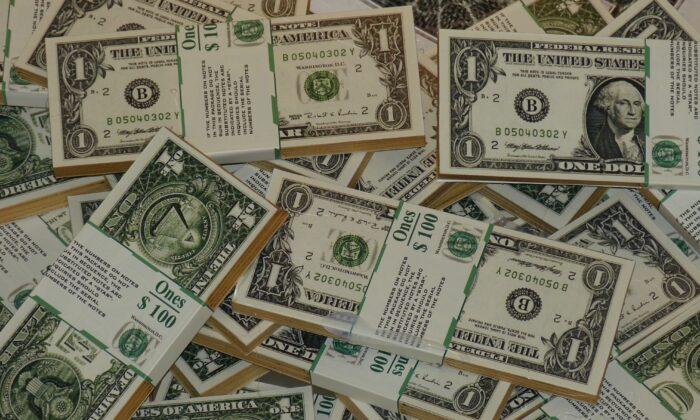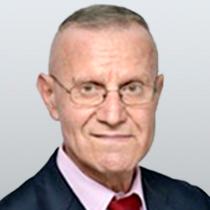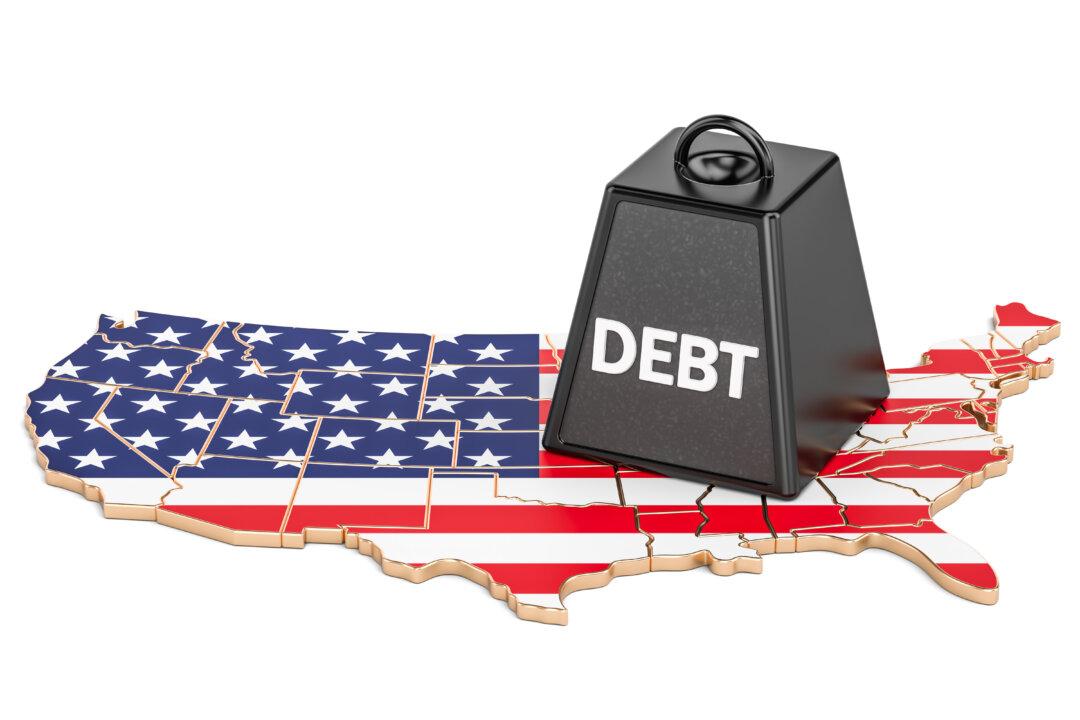After a prolonged period of easy monetary policy, the U.S. Federal Reserve has embarked on a tighter monetary stance. On May 4, 2022, the Fed raised its benchmark interest rate by 0.50 percent, to a target range between 0.75 percent and 1.00 percent. The hike is the largest since 2000 and follows a 0.25 percent increase in March this year, the first increase since December 2018.
Various commentators expect the Fed to raise rates several times in 2022, reaching 2.90 percent in early 2023. Starting in June 2022, Fed policy makers also plan to shrink the Fed’s $9 trillion asset portfolio. The key reason behind the tighter monetary stance is the large increase in the yearly growth rate of the Consumer Price Index (CPI), which stood at 8.5 percent in March against 2.6 percent in March last year.
By a popular way of thinking, it is the role of the central bank to make sure that the economy follows along the path of stable economic growth and price stability. In this way of thinking, the economy is perceived to be like a spaceship, which occasionally slips from the trajectory of stable economic growth and stable prices.
When economic activity slows down and falls below the path of stable economic growth and stable prices, mainstream economists believe, the central bank should give it a push, leading the economy back onto the stable growth path. The push is done by means of loose monetary policy—i.e., the lowering of interest rates and by raising the growth rate of money supply. Conversely, when economic activity is perceived to be “too strong,” then, in order to prevent “overheating,” it should be the duty of the central bank to “cool off” the economy by introducing a tighter monetary stance.
Why Can’t a Tight Stance Erase the Effects of an Easy Stance?
A tight monetary stance, however, cannot undo the negatives of the previous loose stance. The misallocation of resources due to a loose monetary policy cannot be reversed simply by tightening. According to Percy L. Greaves Jr. in “The Causes of the Economic Crisis and Other Essays before the Great Depression” (pdf): “Mises also refers to the fact that deflation can never repair the damage of a priori inflation. In his seminar, he often likened such a process to an auto driver who had run over a person and then tried to remedy the situation by backing over the victim in reverse. Inflation so scrambles the changes in wealth and income that it becomes impossible to undo the effects. Then too, deflationary manipulations of the quantity of money are just as destructive of market processes, guided by unhampered market prices, wage rates, and interest rates, as are such inflationary manipulations of the quantity of money.”A tighter monetary stance, while likely to undermine various bubble activities will also generate various distortions, thereby inflicting damage to wealth generators. Note that a tighter stance is still intervention by the central bank, and it does not result in the allocation of resources in line with consumers’ top priorities. Therefore, it does not follow that a tighter stance can reverse the damage caused by inflationary policy.
We hold that by freeing the economy from central bank interference with interest rates and the money supply, the process of wealth destruction will be arrested, and will strengthen the process of real wealth generation. With a greater pool of wealth, it is going to be much easier to absorb various misallocated resources. Note that some resources, however, will be much harder to absorb, due to their nature.
For example, the demand for certain capital goods and certain human skills could disappear or weaken significantly in the new free market environment. A tighter stance is also going to undermine various activities that emerged on the back of the previous easy monetary stance, making it likely to hurt various bubble activities. The more bubbles generated during the period of an easy monetary stance, the greater the bust is likely to be.
Can Central Bank Policies Maintain Stable Growth?
Most experts are of the view that a major obstacle on the path to the attainment of stable growth and stable prices is the fluctuation of the federal funds rate around the neutral interest rate. The neutral interest rate, it is held, is the one consistent with stable prices and a balanced economy. What then is required for Fed policy makers to target the federal funds rate toward the neutral interest rate, so macroeconomists believe. (According to this view, the main source of economic instability is the variability in the gap between the money market interest rate and the neutral interest rate.)Note that in this framework the neutral interest rate is established where aggregate supply and aggregate demand curves intersect. If the market interest rate falls below the neutral interest rate, investment will exceed savings implying that aggregate demand is greater than the aggregate supply. Assuming that the excess demand is financed by the expansion in bank loans, this process leads to new money creation, which in turn pushes up the general level of prices.
If the market interest rate rises above the neutral interest rate, however, savings will exceed investment, so aggregate supply will exceed aggregate demand, which means bank loans and the stock of money will contract, and prices will fall. Hence, whenever the market interest rate is in line with the neutral interest rate, the economy is in a state of equilibrium and there are neither upward nor downward pressures on the price level. The main problem, however, is that the neutral interest rate cannot be observed. How can one tell whether the market interest rate is above or below the neutral interest rate?
In attempting to understand the stable growth path, economists assume the existence of aggregate supply and demand curves. The intersection of these curves generates the so-called equilibrium that supposedly corresponds to the growth path of economic stability.
Why General Equilibrium Is a Fiction
The existence of a general equilibrium as depicted by the intersection between the overall economy supply curve with the overall economy demand curve is questionable and the economy as such does not exist apart from individuals. Hence, something that does not exist cannot move to a general equilibrium; the concept of equilibrium is relevant only to individuals.Equilibrium in the context of individuals’ conscious and purposeful behavior has nothing to do with the imaginary equilibrium as depicted by popular economics. Instead, it is established when individuals’ ends are met.
When a supplier successfully sells his supply at a price that yields profit, he is said to have reached an equilibrium. Similarly, consumers who bought this supply have done so in order to meet their goals. Again, every individual in his own context achieves his equilibrium whenever he reaches his goal.
In the absence of central bank interference, the interest rate that is established will be in line with individuals’ various goals, not the wishes of central bank planners. Thus, some individuals might discover that the interest rate that they would have to pay is much lower than what they are ready to pay. For some other individuals, the free-market interest rate may turn out to be too high. Consequently, they will be out of the market. (The marginal lender and the marginal borrower set the market interest rate. The intersection of the supply and the demand curves does not establish the market interest rate.)
Once policies are implemented to achieve the neutral interest rate—which supposedly reflects the so-called general equilibrium as established by the mathematical models—this is likely to contradict what the free market would have established. As a result, this will misallocate resources and weaken the process of real wealth generation, causing economic impoverishment. (Note that by setting the federal funds target rate, Federal Reserve policy makers are pretending that they have the numerical information of the interest rate that corresponds to the growth path of stable economic growth and stable prices.)
The failure of various centrally planned economies such as the former Soviet Union demonstrates how a central authority’s attempt to push the economy toward the growth trajectory as dictated by the government bureaucrats’ results in economic disaster. Rather than raising interest rates to counter strong increases in the prices of goods and services, the Fed should close all the loopholes for the generation of money out of “thin air.”
Contrary to the economic mainstream way of thinking, the damage caused by inflationary policies cannot be neutralized by countering with tight-money policies. The deflationary policy, itself, is a policy of intervention and it sets in motion a different-but-harmful form of resource misallocation.






